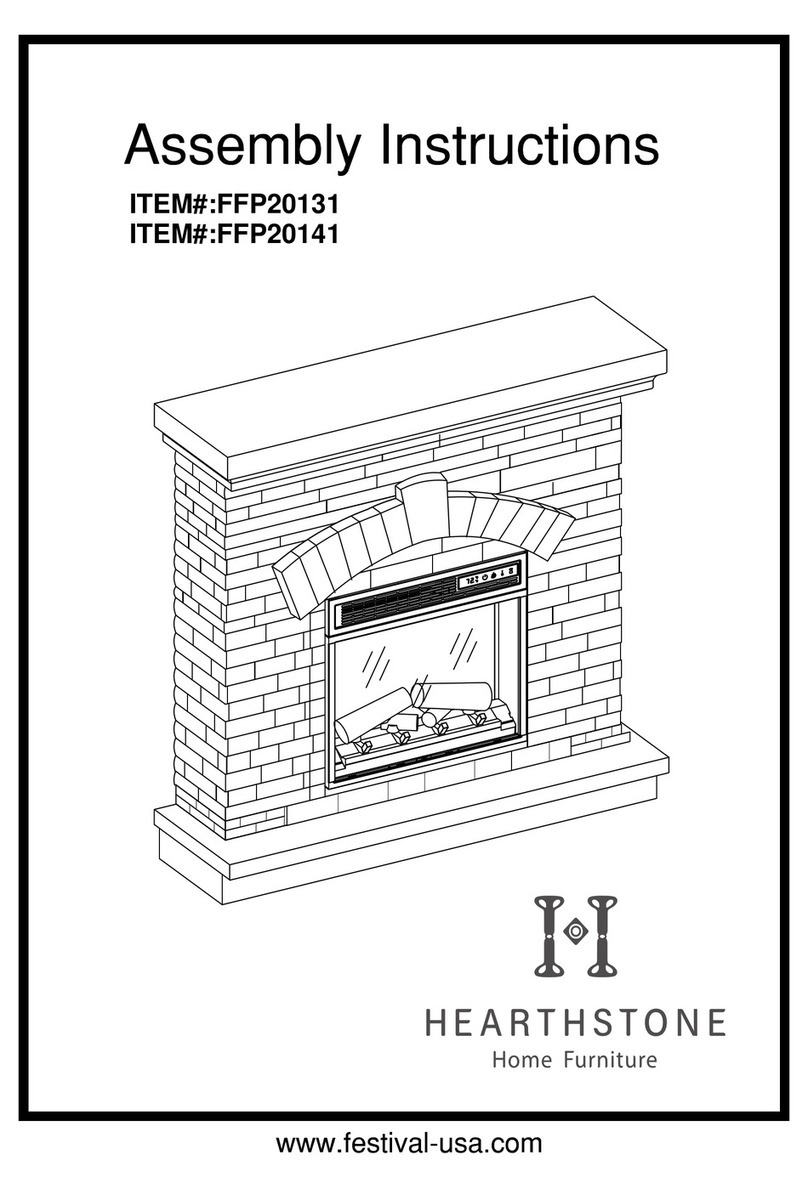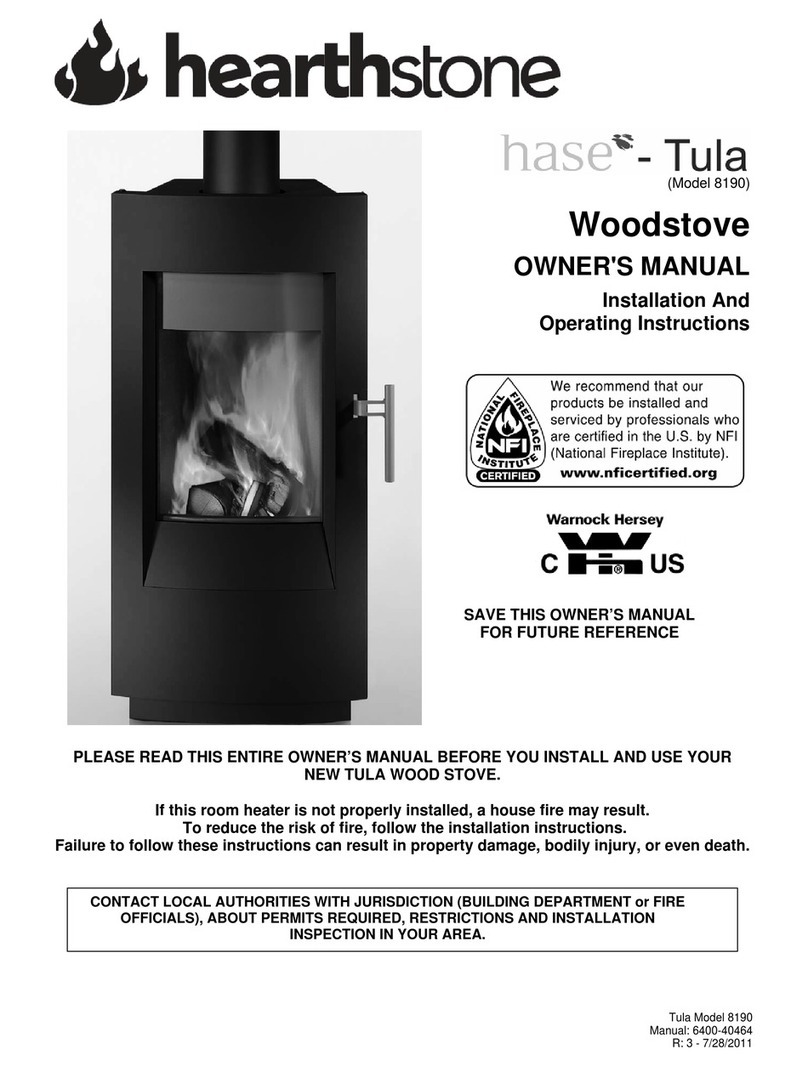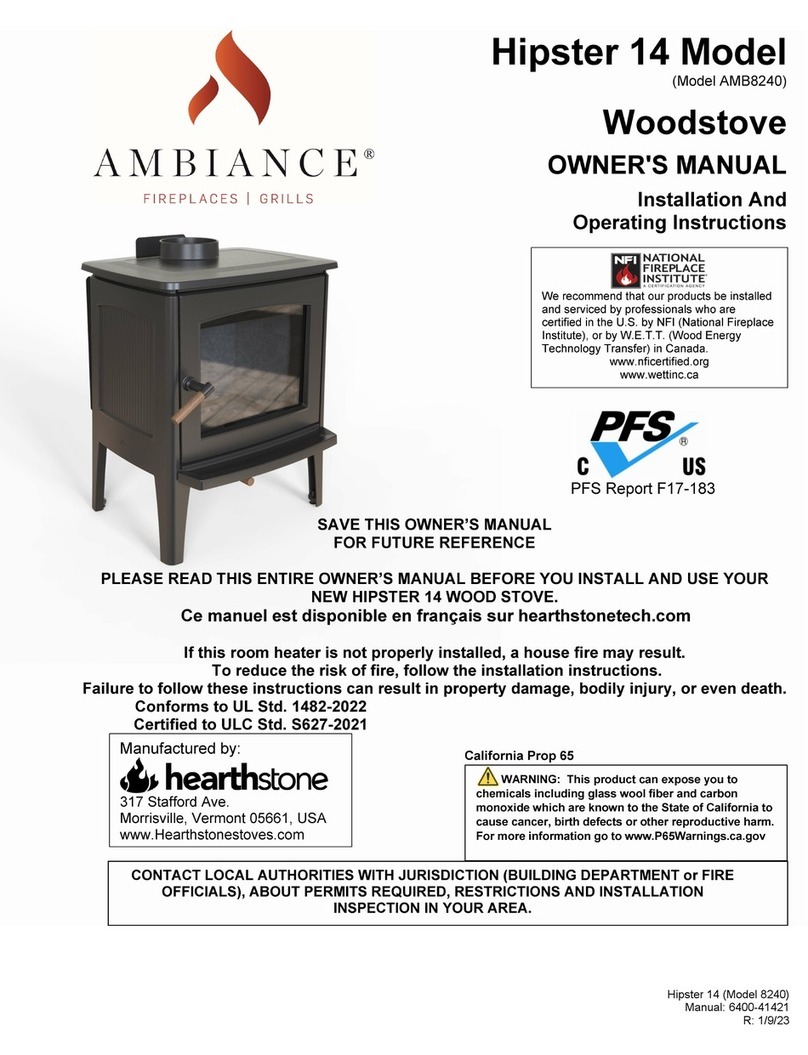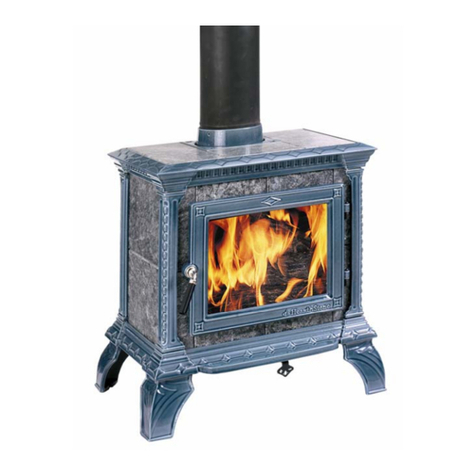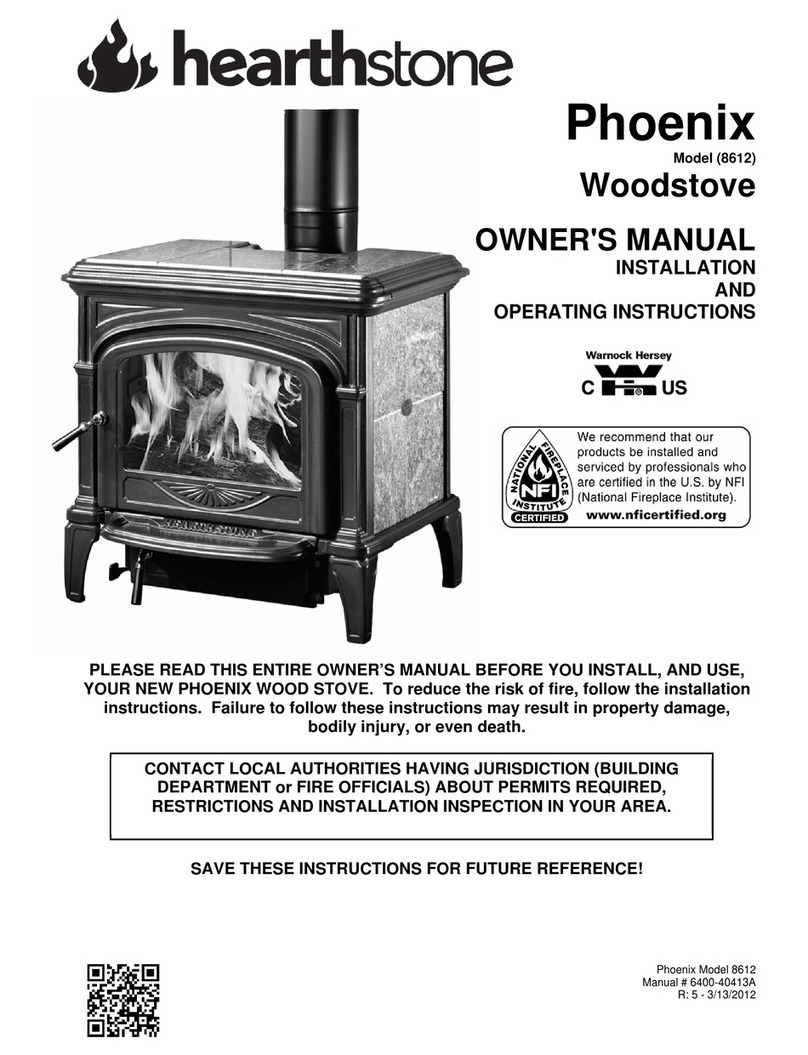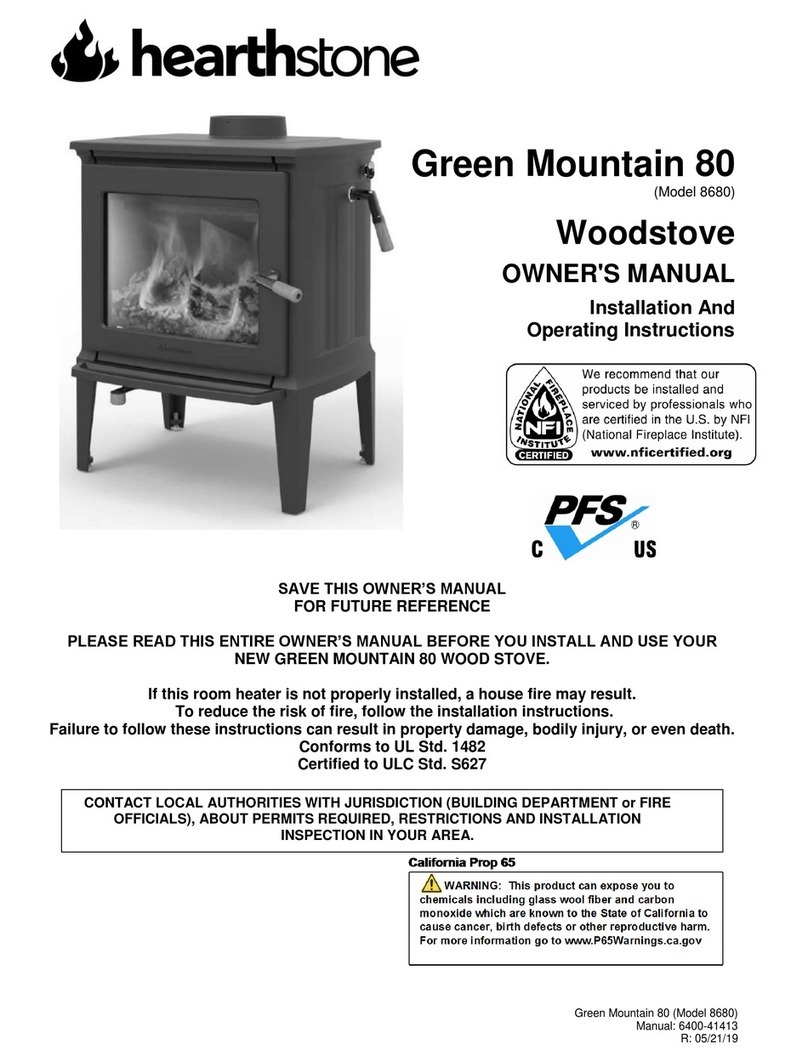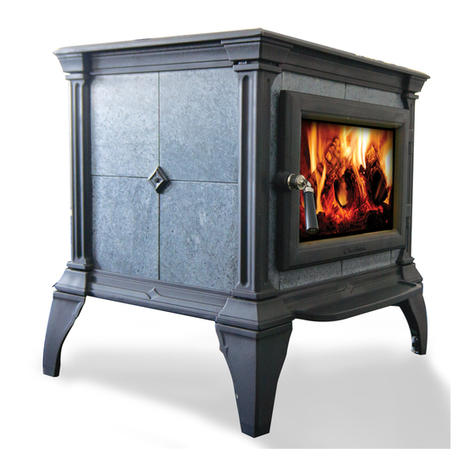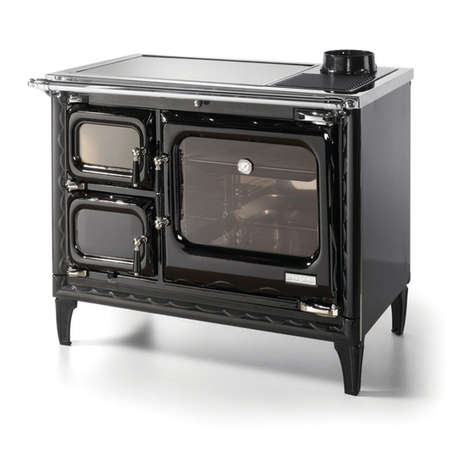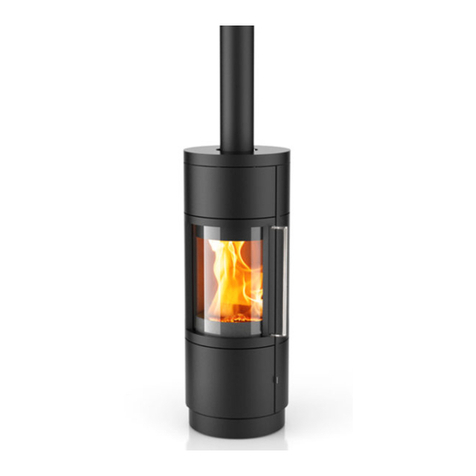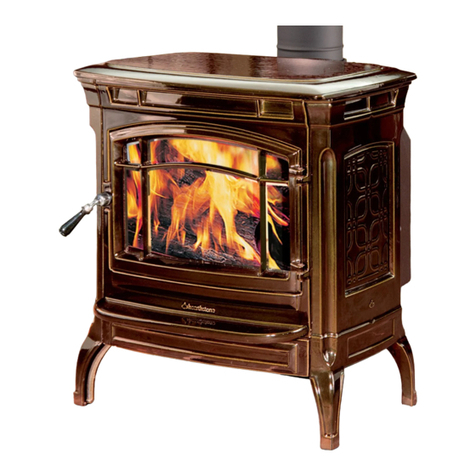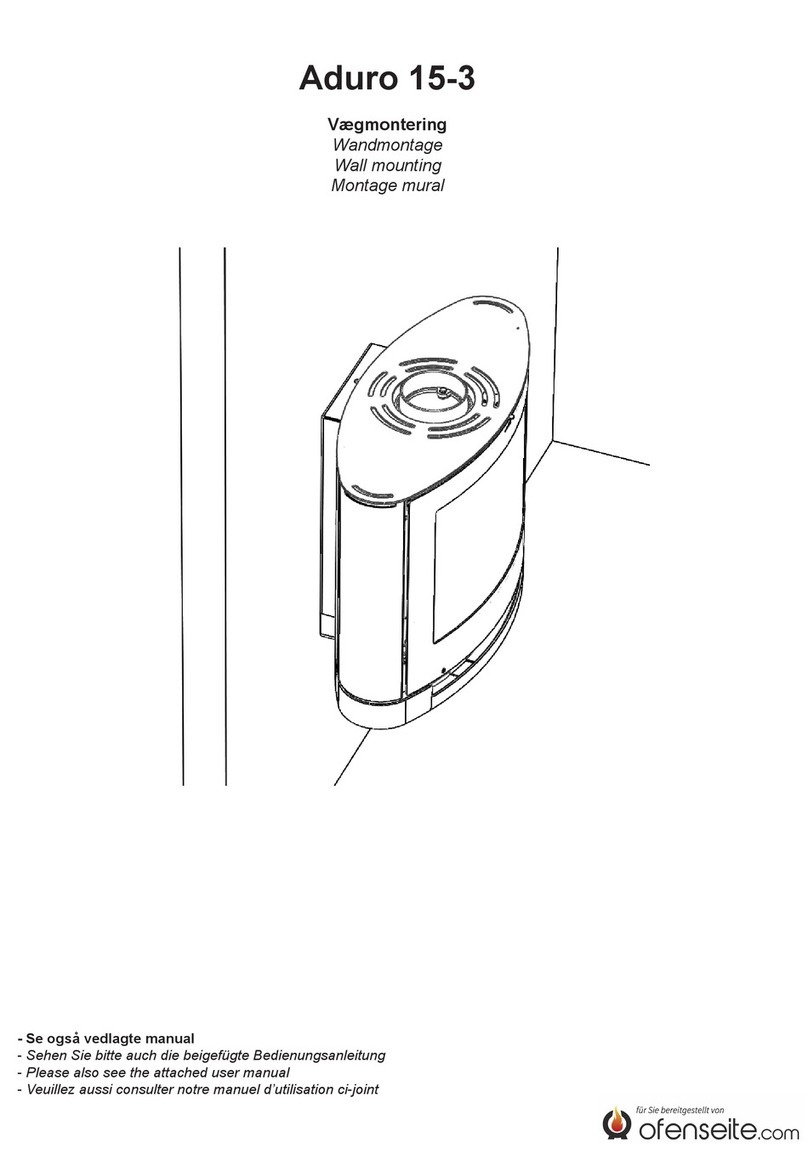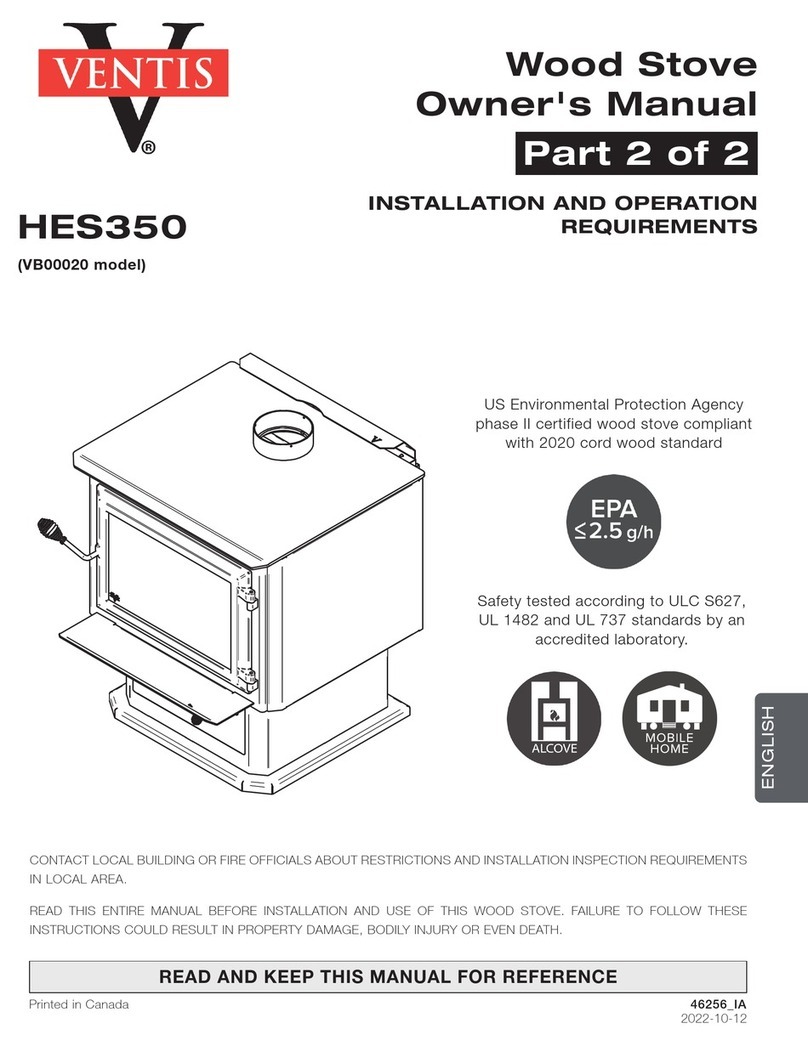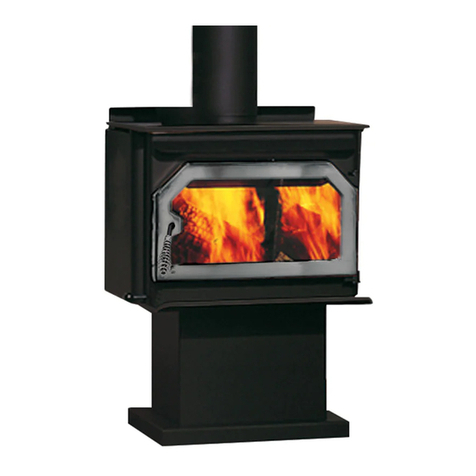
Hearthstone Quality Home Heating Products, Inc. ®Tribute Model 8040
Introduction
Congratulations! You have just invested in a most
unique wood burning stove –the Tribute Wood
Burning Stove from Hearthstone Quality Home
Heating Products Inc®. The Tribute Model –8040 is
a clean burning EPA certified, non-catalytic wood
burning stove. At 1.1 cubic feet capacity and 2.97
grams per hour particulate emissions you can be
proud to join the Hearthstone family with our Premier
Soapstone Wood-Burning Stove. The front door,
along with the generous depth allow for loading of
wood up to 16 inches long!
Your purchase insures years of clean, comfortable
heat with minimal maintenance. You will receive the
benefits of the most advanced technology in wood
burning without the cost and maintenance
requirements of a catalytic stove. The Tribute
blends modern technology with the unique beauty
and heating qualities of soapstone, long known for
its even heat production and long heat-retaining
ability. We trust that you will appreciate the quality of
our handcrafted product.
Please read this manual in its entirety. Its purpose
is to familiarize you with your stove's safe
installation, proper break-in, operation and
maintenance. It contains information that will be
useful to you now, and in years to come, so keep it
handy and refer to it as needed.
Use these instructions as well as national, state, and
local building codes to install your stove. Be sure to
maintain the designated stovepipe and stove
clearances to walls, ceilings, hearth, and other
combustible surfaces. This will help reduce the risk
of fire. Failure to follow these instructions can result
in property damage, bodily injury, and even death.
Locate your stove in a safe, convenient, open area;
away from traffic flow, doors, and hallways; and near
a chimney and chimney connector. Review the
proper clearance measurements from combustible
surfaces. You can safely reduce required clearances
in most cases by using the, optional, rear heat
shield, and also with a special connector pipe and
special wall coverings as specified by this manual,
the NFPA 211 codes, and your local authorities
having jurisdiction.
Keep furniture, drapes, curtains, wood, paper, and
other combustibles far away from the stove. Never
install the stove in a location where gasoline,
kerosene, charcoal lighter fluid or other flammable
liquids are used or stored.
Locate the stove centrally in your living area to allow
the heat to travel naturally to distant rooms. We
recommend that you do not locate your stove in an
uninsulated basement. The amount of radiant
energy required to heat concrete basement walls is
so great that most of the usable heat is absorbed by
them and lost.
SAFETY NOTICE: A HOUSE FIRE MAY RESULT IF
THIS STOVE IS NOT INSTALLED PROPERLY.
FOR YOUR SAFETY, CAREFULLY FOLLOW THE
INSTALLATION DIRECTIONS. CONTACT LOCAL
BUILDING OR FIRE OFFICIALS ABOUT
RESTRICTIONS AND INSTALLATION INSPECTION
IN YOUR AREA.
The performance of your stove depends on many
variables. Since all installations are unique, the
general information and operating procedures
presented here can only serve as useful guidelines
rather than hard and fast rules. Should you have
any questions, do not hesitate to contact your dealer
for additional information.
Validate your warranty - return your warranty
registration card to Hearthstone within 30 days of
purchase. Once your warranty is validated by
returning your warranty card, contact your dealer for
any necessary warranty service.
This stove is manufactured and warranted by:
Hearthstone Quality Home Heating Products Inc®
317 Stafford Ave.
Morrisville, Vermont 05661-8695
www.hearthstonestoves.com
inquiry@hearthstonestoves.com

